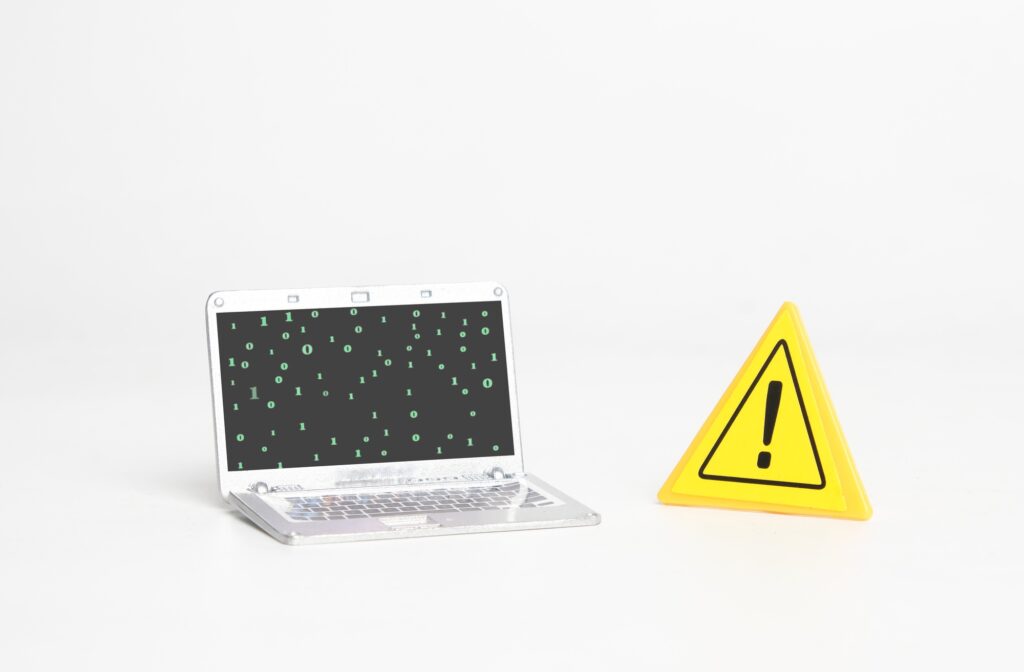
Recent reports paint an alarming and complex cybersecurity landscape, from technical debt to social factors like workplace reorganization. Navigating this shifting environment may feel like playing whack-a-mole. With 68% of breaches occurring due to human error this year alone, adversaries are leveraging modern technology and psychological techniques to exploit security measures.
Microsoft Digital Defense Report
Cyber threats continue to evolve into increasingly dangerous and complex threats to businesses, posing an increasing danger. Attackers are well-funded and highly skilled; cybersecurity defenders face off against ransomware, phishing attacks, identity attacks, and more every day. The Microsoft Digital Defense Report paints an unnerving picture of this rapidly evolving threat landscape by outlining key vulnerabilities and risks – providing insights and strategies on how you can strengthen your defenses with these tools.
Microsoft Threat Intelligence created this report using data and telemetry from across its security ecosystem of endpoints, cloud services, global customers, and 15,000 security partners specialized in cybersecurity. They analyzed over 78 trillion security signals daily which allowed them to better understand attackers and what they’re searching for.

Microsoft’s 2024 Digital Defense Report shows that nation-state actors are becoming more frequent. Microsoft has identified hundreds of groups operating from nations with geopolitical agendas ranging from attacking critical infrastructure or meddling with elections. Furthermore, this report documents an ever-increasing threat of fraud as scammers capitalize on advances like AI and machine learning to gain financial advantage and steal more money from people and companies alike.
Report findings also emphasize the need for organizations to bolster their security posture by adopting zero-trust approaches that protect themselves against attacks that target misconfigurations, breaches, and identity exposures. Therefore, multifactor authentication (MFA), passwordless technologies and continuous identity monitoring are all recommended as means of strengthening an organization’s security posture.
Finally, this report discusses the rising threat of business disruption due to DDoS attacks that increasingly target application-layer targets. This approach differs significantly from traditional network attacks as its stealthiness makes it harder to stop.
Overall, this report serves as a call to action for businesses of all sizes to make cybersecurity a top priority. By staying current with emerging threats and strategies, your organization’s defenses will remain strong enough to protect clients, intellectual property assets, and prevent new attacks against your online presence.
The Microsoft Digital Defense Report (DDR) highlights the rapidly evolving cyber threat landscape, emphasizing how nation-state actors, ransomware, and advanced fraud techniques pose significant risks.
Key Highlights:
- Comprehensive Threat Intelligence:
Microsoft analyzes 78 trillion security signals daily across endpoints, cloud services, and customers to identify attack trends. - Rise in Nation-State Attacks:
Hundreds of nation-state groups are targeting critical infrastructure and elections for geopolitical agendas. - AI-Powered Fraud:
Attackers increasingly use AI and machine learning for advanced phishing, fraud, and ransomware attacks. - Zero Trust Advocacy:
Microsoft recommends Zero Trust architectures, including:- Multifactor Authentication (MFA)
- Passwordless technologies
- Continuous identity monitoring
- DDoS Attacks Targeting Application Layers:
Application-layer DDoS attacks are stealthier and harder to detect than traditional network-layer attacks.
Summary Table: Microsoft’s Defense Recommendations
| Recommendation | Benefit |
|---|---|
| Multifactor Authentication (MFA) | Reduces risk of identity-based attacks. |
| Passwordless Technology | Enhances user security while simplifying access. |
| Zero Trust Architecture | Prevents lateral movement and strengthens security. |
| Continuous Monitoring | Detects misconfigurations and breaches quickly. |
Recap:
The DDR underscores the importance of Zero Trust approaches and advanced security measures, especially as nation-state actors and ransomware attacks become more sophisticated.
Verizon 2024 Data Breach Investigations Report
The 17th annual Verizon Data Breach Incident Report (DBIR) examined 30,458 security incidents and 10,626 confirmed breaches across 94 countries, which is defined as “the confirmed disclosure – rather than potential exposure – of data to an unintended party.” It reports on the most prevalent attacks while also providing critical cybersecurity gaps that exist across industries of all sizes.

Human error remains one of the primary contributors to data breaches, accounting for two-thirds of cases studied. Hackers take advantage of our inherent human failings by preying upon our fallibilities to steal credentials, gain access, and spread malware across our networks. Luckily, this year’s DBIR noted an increase in employee awareness training and self-reporting phishing attempts, which should reduce breaches caused by the human factor.
However, according to the DBIR vulnerabilities remain one of the primary entryways for threat actors, and their usage nearly tripled this year due to factors including widespread MOVEit exploits and other zero-day exploits. A majority of vulnerabilities found within web applications were exploited as entry points into other parts of a system by attackers using them as footholds.
Noteworthy is the rise of attacks targeting supply chains, particularly third-party software vendors. Such attacks are often motivated by espionage but also involve ransomware or other forms of extortion schemes; to protect themselves from such threats, companies should conduct careful vendor selection/vetting processes as well as require cooperation in security investigations as well as clearly state customer notification requirements to reduce incidents of this nature.
Although every security professional must read the DBIR, it’s also crucial that they focus on what can be done right now to combat its risks. According to this report, several actions that could be taken include using encryption for data, increasing access controls, and requiring strong authentication. In addition, patch management must be prioritized and Zero Trust approaches implemented to secure networks from breaches.
With threats constantly emerging and changing, organizations must have an effective defense strategy in place. A zero-trust framework that segments networks, detects attacker movements, and verifies access is especially vital when working across distributed workforces and cloud services that lack effective protection like traditional VPNs do. Discover how a zero-trust solution can protect your organization regardless of where employees work or the infrastructure they utilize.
The 17th annual Verizon Data Breach Investigations Report (DBIR) analyzed 30,458 incidents and 10,626 confirmed breaches across 94 countries, focusing on human error and vulnerabilities.
Key Highlights:
- Human Error:
Human failings, such as phishing, accounted for two-thirds of breaches, but employee awareness training and self-reporting phishing attempts have increased. - Exploitation of Vulnerabilities:
Vulnerabilities in web applications nearly tripled this year due to zero-day exploits like the MOVEit vulnerability. - Rise in Supply Chain Attacks:
Threat actors increasingly target third-party vendors through ransomware and extortion schemes. - Mitigation Recommendations:
- Use encryption for data protection.
- Implement strong authentication methods like MFA.
- Prioritize patch management to address vulnerabilities.
- Adopt Zero Trust frameworks to secure distributed environments.
Summary Table: Breach Contributors and Mitigations
| Contributor | Recommended Mitigation |
|---|---|
| Human Error | Employee training and phishing simulations. |
| Vulnerabilities | Regular patching and security audits. |
| Supply Chain Attacks | Vendor vetting and security cooperation. |
Recap:
The DBIR emphasizes securing human and machine identities, focusing on supply chain risks, and strengthening systems through encryption, MFA, and patch management.
What We’ve Seen in 2024
Microsoft’s Digital Defense Report (DDR) gives organizations insight into the global cybersecurity landscape and highlights critical vulnerabilities and emerging risks they must consider seriously. Microsoft is one of the world’s largest technology companies and processes over 78 trillion security signals daily from Windows devices, its cloud services, and a wide array of products and services – this information allows analysts to gain an understanding of attacker and threat actor activity, provide visibility into attack trends and identify ways organizations can better protect themselves.
As noted by the DDR 2024, malicious actors are becoming more adept and well-funded at employing sophisticated strategies that pose threats even to top cyber defenders. Well-orchestrated and highly targeted attacks are on the rise, posing both identity attacks and ransomware as major risks. Furthermore, well-resourced cybercriminal syndicates continue to employ familiar attack patterns like phishing and password attacks, with an upsurge in unmanaged devices exploited for this type of attack and various evasion techniques like adversary-in-middle phishing and SIM swapping which allow them to gain unauthorized entry to networks without multifactor authentication checks or multifactor authentication systems in place to gain unauthorization, or gain entry without authorization from networks or their owners or administrators.
The DDR further notes that artificial intelligence (AI) offers attackers new opportunities for attack sophistication and has helped scale their operations by automating processes, using deepfakes to impersonate people, and using IoT botnets for DDoS attacks. But AI can also be beneficial when used appropriately by defenders; for instance, when applied correctly as part of their efforts to detect and respond to anomalies.

Ransomware remains an issue, with the DDR 2024 recording an increase of 2.75x in human-operated ransomware encounters since last year. Attackers typically employ phishing or compromised IoT devices to gain entry into networks; organizations should educate staff to adopt Zero Trust principles and remain cautious when reviewing email attachments, SMS text links or voice calls that appear suspicious.
Organizations should also be concerned by the rise in nation-state attacks against businesses that provide sensitive data, particularly those in aerospace and defense. One such group – Octo Tempest group or Scattered Spider – gained notoriety in 2024 for hybrid attacks using social engineering techniques and SIM swapping attacks against IoT devices, exploiting them in order to deploy ransomware payloads.
Education and research have also become prime targets of nation-state attacks, with Russia and Iran targeting them frequently for intelligence collection purposes. Russia has specifically been targeting universities in the US and Europe to gather data regarding policies and decision-making processes; similarly, Iran has focused on US targets as well as Israeli ones to obtain intelligence regarding Israel’s ongoing military conflict with Hamas.
The cybersecurity landscape in 2024 has grown increasingly complex, with attackers using advanced strategies like AI-driven fraud and ransomware targeting unmanaged devices.
Key Observations:
- Sophisticated Attack Techniques:
Attackers use deepfakes, IoT botnets, and adversary-in-the-middle phishing to bypass traditional security measures. - Nation-State Attacks:
- Russia targets U.S. and European universities for intelligence collection.
- Iran focuses on U.S. and Israeli organizations for geopolitical gains.
- Ransomware Trends:
- Human-operated ransomware attacks have increased by 2.75x compared to last year.
- Attackers use phishing and compromised IoT devices for network infiltration.
- Education and Research Targets:
Nation-states frequently target academic institutions to gain insights into policies and decision-making processes.
Summary Table: Emerging Risks and Solutions
| Threat | Solution |
|---|---|
| AI-Powered Fraud | AI-based threat detection and anomaly monitoring. |
| Nation-State Attacks | Zero Trust frameworks and continuous monitoring. |
| Ransomware | Employee education and advanced endpoint protection. |
Recap:
2024 sees a rise in sophisticated attacks driven by AI and geopolitical motives. Organizations must adopt Zero Trust principles and AI-powered defenses to stay ahead.
Strengthening Cybersecurity for 2025
The 2024 cybersecurity landscape was more complex and volatile than ever, with threats evolving at an unprecedented pace. Reports from Microsoft’s Digital Defense Report and the Verizon Data Breach Investigations Report highlight the growing sophistication of cyberattacks, from nation-state hacking and AI-powered fraud to ransomware targeting supply chains.
A key takeaway from these insights is that human error remains the largest cybersecurity risk, making awareness training, multi-factor authentication, and Zero Trust frameworks essential for defense. Additionally, organizations must prioritize continuous monitoring, proactive threat intelligence, and vendor security assessments to safeguard their infrastructure.
What’s Next?
Businesses must act now by:
✔ Implementing Zero Trust architectures to prevent unauthorized access.
✔ Strengthening employee training to reduce phishing-related breaches.
✔ Adopting AI-powered cybersecurity solutions to detect and mitigate advanced threats.
✔ Enhancing vendor security measures to protect against supply chain attacks.
With the rapid adoption of cloud technologies and AI-driven automation, staying ahead of cybersecurity trends is no longer optional—it’s a necessity. By taking a proactive approach and leveraging insights from these reports, organizations can reduce their attack surface, protect sensitive data, and build long-term resilience against emerging threats.
Learn more about how to enhance your cybersecurity defenses with our ThreatHunter MXDR MSSP Services or complete the form below to get in touch with our security experts.



